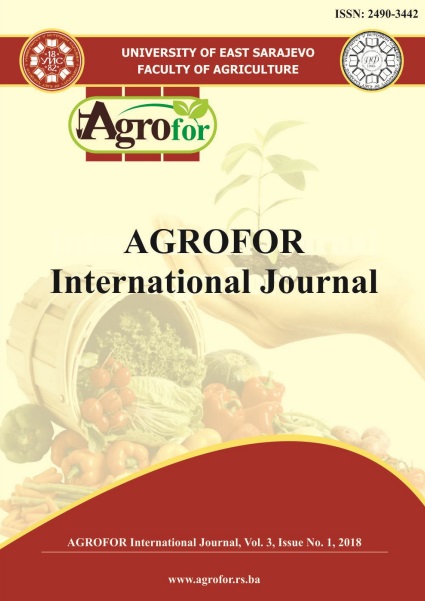POLYMORPHISMS IN CANDIDATE GENES FOR BEEF QUALITY IN PINZGAU CATTLE
DOI:
https://doi.org/10.7251/AGRENG1801005TAbstract
The aim of present study was to identify the polymorphisms in genes encoding
calpastatin (CASTUoG), calpain (CAPN1, CAPN2), diacylglycerol Oacyltransferase
(DGAT1), thyroglobulin (TG5), and Stearoyl-CoA Desaturase
(SCD) in order to analyse genetic structure of Pinzgau cattle. The genomic DNA
for genotyping was obtained from in total 56 blood samples of Pinzgau bulls. After
extraction, the concentration of DNA was controlled by the spectrophotometry
measurement. The genotyping of each individual was carried out by using PCRRFLP
methods. The average value of observed (0.37±0.05) and expected
heterozygosity (0.39±0.06) clearly indicated the prevalence of homozygous
individuals. Observed Wright's fixation indexes showed positive values across all
loci (0.03±0.06), which confirmed slight deficiency of heterozygote animals
compared to the Hardy-Weinberg equilibrium expectations. The Hardy-Weinberg
equilibrium was found in population, which signalizes only slight impact of factors
such as selection, migration or inbreeding. The effectiveness of loci allele impact in
populations has been described also by effective allele numbers (1.68±0.13) that
expressed the decrease of allele activity in population. The loss of heterozygosity
in analysed population was found across all of genetic markers. Each of the
evaluated indicators clearly points to the need of genetic diversity monitoring.
Moreover, the analyses of single nucleotide polymorphisms in genes significantly
involved in control of economically important production traits are still very usable
methods for identification of genetic markers that can be used in marker assisted
selection of cattle.

